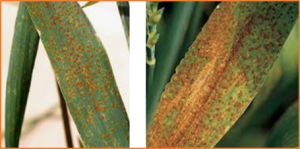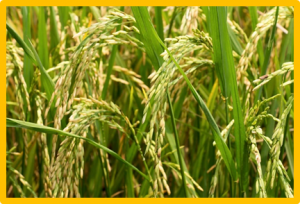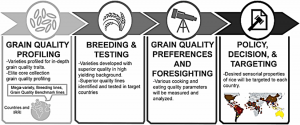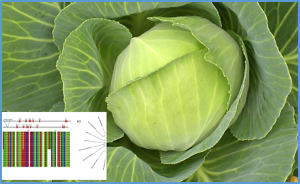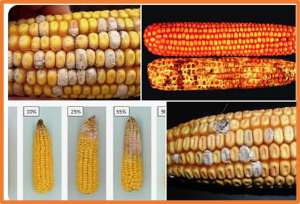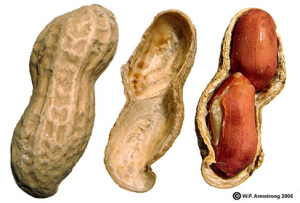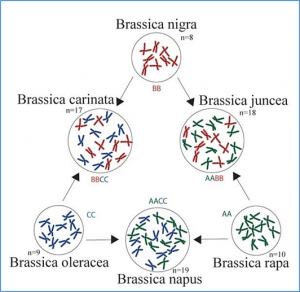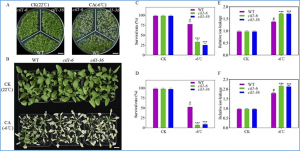Leaf rust and stripe rust are important wheat diseases worldwide causing significant losses where susceptible varieties are grown. Resistant cultivars offer long-term control and reduce the use of hazardous chemicals, which can be detrimental to both human health and the environment. Land races have been a valuable resource for mining new genes for various abiotic and biotic stresses including wheat rusts.
Drought is an abiotic stress that limits plant growth and productivity, and the development of trees with improved drought tolerance is expected to expand potential plantation areas and to promote sustainable development. Previously we reported that transgenic poplars (Populus tremula × P. tremuloides, T89) harboring the stress-responsive galactinol synthase gene,
5-aminolevulinic acid (ALA) is the common precursor of all tetrapyrroles and plays an important role in plant growth regulation. ALA is synthesized from glutamate, catalyzed by glutamyl-tRNA synthetase (GluRS), glutamyl-tRNA reductase (GluTR), and glutamate-1-semialdehyde aminotransferase (GSAT). In Arabidopsis, ALA synthesis is the rate-limiting step in tetrapyrrole production via GluTR post-translational regulations.
The eating and cooking quality (ECQ) of rice is critical for determining its economic value in the marketplace and promoting consumer acceptance. It has therefore been of paramount importance in rice breeding programs. Here, we highlight advances in genetic studies of ECQ and discuss prospects for further enhancement of ECQ in rice. Innovations in gene- and genome-editing techniques have enabled improvements in rice ECQ. Significant genes and quantitative trait loci (QTLs) have been shown to regulate starch composition, thereby affecting amylose content and thermal and pasting properties.
Cabbage is a plant-vernalization-responsive flowering type. In response to cold, BoFLC2 is an important transcription factor, which allows cabbage plants to remain in the vegetative phase. However, there have been few reports on the detailed and functional effects of genetic variation in BoFLC2 on flowering time in cabbage. Herein, BoFLC2E and BoFLC2L, cloned from extremely early and extremely late flowering cabbages, respectively, exhibited a 215-bp indel at intron I, three non-synonymous SNPs and a 3-bp indel at exon II. BoFLC2L was found to be related to late flowering,
Fusarium verticillioides is a common maize (Zea mays L.) pathogen that causes Fusarium ear rot (FER) and produces the mycotoxin fumonisin (FUM). This study empirically compared phenotypic selection (PS) and genomic selection (GS) for improving FER and FUM resistance. Three intermating generations of recurrent GS were conducted in the same time frame and from a common base population as two generations of recurrent PS. Lines sampled from each PS and GS cycle were evaluated in three North Carolina environments in 2020. We observed similar cumulative responses to GS and PS, representing decreases of about 50% of mean FER and FUM compared to the base population.
Auxin response factors (ARFs) play important roles in plant growth and development; however, research in peanut (Arachis hypogaea L.) is still lacking. Here, 63, 30, and 30 AhARF genes were identified from an allotetraploid peanut cultivar and two diploid ancestors (A. duranensis and A. ipaensis). Phylogenetic tree and gene structure analysis showed that most AhARFs were highly similar to those in the ancestors. By scanning the whole-genome for ARF-recognized cis-elements, we obtained a potential target gene pool of AhARFs, and the further cluster analysis and comparative analysis showed that numerous members were closely related to root development.
Interspecific hybridization and allopolyploidization present an important pathway for plant evolution and breeding. In this study, different types of digenomic autoallohexaploids with two or four copies of two subgenomes (AAAACC, AACCCC, AAAABB, BBBBCC, BBCCCC) were synthesized by the crosses between three Brassica allotetraploids and their diploid progenitors and the chromosome doubling, and their meiotic behaviors were analyzed by fluorescence in situ hybridization (FISH).
Photosynthesis occurs mainly in chloroplasts, whose development is regulated by proteins encoded by nuclear genes. Among them, pentapeptide repeat (PPR) proteins participate in organelle RNA editing. Although there are more than 450 members of the PPR protein family in rice, only a few have been shown to affect RNA editing in rice chloroplasts. New rice germplasm and mutants were created by gene editing technology, which could be used for rice breeding and gene function study, respectively.
With the intensification of global warming, extreme weather events have occurred more frequently, among which cold stress has become one of the major environmental factors that restrict global crop yield and production. Multiple long noncoding RNAs (lncRNAs) have been predicted or recognized in the plant response to cold stress, however, the molecular biological functions of most of these RNAs are still poorly understood


 Curently online :
Curently online :
 Total visitors :
Total visitors :
